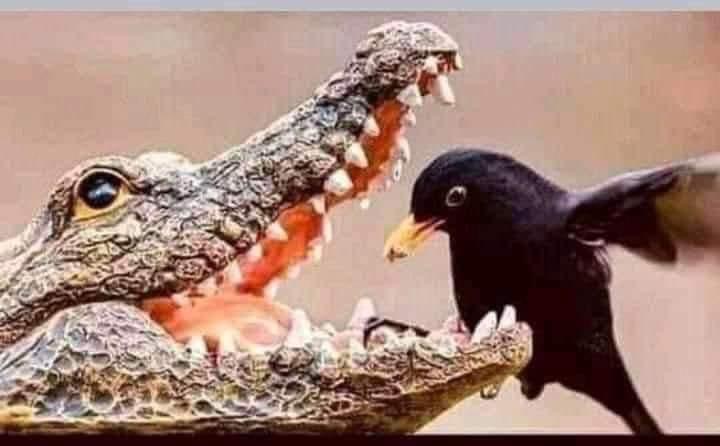The Symbiotic Harmony of the Plover Bird and Crocodile: A Tale of Mutual Benefit

In the intricate tapestry of nature, one can often find unexpected alliances that defy conventional wisdom. A fascinating example of this can be observed in the unique relationship between the plover bird and the crocodile, a partnership that showcases the beauty of coexistence and symbiosis.
At first glance, the crocodile and the plover bird might seem like unlikely companions. After all, the crocodile is a fearsome predator, with its powerful jaws and razor-sharp teeth, while the plover bird appears delicate and vulnerable in comparison. Yet, their bond is a remarkable display of nature’s ingenuity.
The crocodile’s diet consists primarily of fatty meals, which, while sustaining its immense size and strength, also pose a peculiar challenge: the remnants of food often get lodged in its teeth. These remnants can persist for extended periods, leading to potential harm to the crocodile’s dental health. Recognizing this need, nature unveiled an extraordinary solution – the plover bird.
The plover bird is a skilled dentist of the animal kingdom, seemingly tailor-made to attend to the crocodile’s dental hygiene. It hovers in areas where crocodiles frequent, ever-watchful for the signal that mealtime has concluded. Once the crocodile has completed its feast, it opens its mouth, inviting the plover bird to commence its dental care ritual. With an uncanny sense of trust and understanding, the plover bird steps onto the crocodile’s lower jaw and adeptly removes the remnants of food from its teeth.
This harmonious exchange is a captivating example of mutualism, where both parties benefit from their interaction. The crocodile enjoys clean teeth, reducing the risk of dental complications that could potentially affect its health. Meanwhile, the plover bird finds sustenance in the form of a nourishing meal, earned through its precision dental work. This cycle of mutual support underscores the interdependence that exists in nature, defying hierarchical norms.
The question of how this remarkable relationship evolved invites contemplation. Did the crocodile consciously open its mouth for the plover bird, recognizing the benefits of this partnership? Did the plover bird develop an innate sense of safety in the presence of the crocodile, or did it learn through generations of observation? While these questions remain open to scientific investigation, the fact remains that this partnership is a testament to the wonders of the natural world.
In a world where competition often reigns supreme, the tale of the plover bird and the crocodile serves as a reminder of the boundless diversity and cooperation present in nature. It challenges us to rethink our assumptions about the relationships that exist within ecosystems and encourages us to view even the most contrasting entities as potential partners in a dance of life. Indeed, this symbiotic alliance is a testament to the profound wisdom of nature, a wisdom that transcends our understanding and underscores the intricate balance that sustains the world around us.













